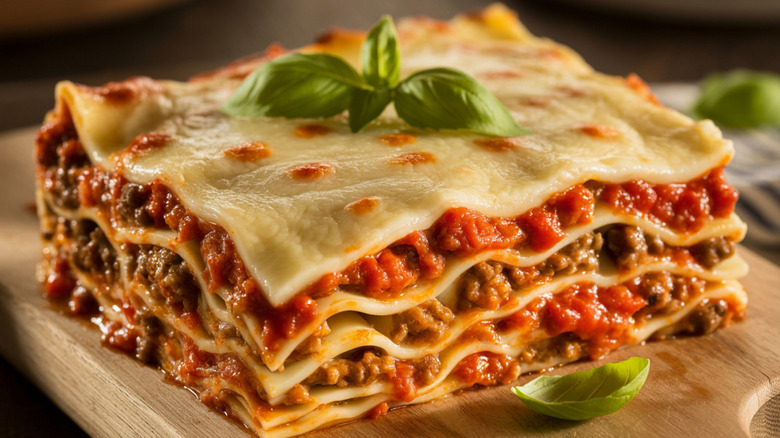How Long Does Homemade Lasagna Last In The Fridge (And Should You Freeze It)?
Lasagna is one of the most beloved old-school Italian dishes, a saucy and cheesy classic that's hard to resist. As delicious as it is, this baked pasta takes time to make — and after all that hard work, you want to ensure you can enjoy every last bite. This brings up a common question: How long does leftover lasagna last in the fridge, and can you freeze it to prolong its life? To find out, Food Republic spoke to Jessica Montanelli, the owner and cook behind Cooking My Dreams.
"It mainly depends [on] what's inside the lasagna," Montanelli said about fridge time. "A vegetable lasagna will stay fresh for longer compared to a lasagna with beef or chicken inside. Either way, it's best to eat it within three days to be safe." On the plus side, there's a bonus to eating lasagna a day or two later, as it allows the flavors to meld more. However, for best results, make sure to store your lasagna properly — ideally, according to Montanelli, in "a vacuum sealable container." An airtight container works well too, but simply covering the baking dish with plastic wrap isn't advised, as this "will allow condensation to form, which may make the lasagna soggy or quicken the growth of mold."
When you're ready to enjoy your refrigerated leftovers, reheating tips include adding extra sauce, cheese, or a little bit of water to keep your lasagna from drying out in the oven. In general, using a microwave to reheat lasagna is a mistake — its dense, layered structure makes it difficult to reheat evenly.
How to freeze and reheat frozen homemade lasagna
If you're not planning to eat leftover lasagna within three days, you can freeze it for up to three months. Freezing is also useful if you want to assemble the lasagna in advance (also for up to three months), so it just has to be cooked on the day you're serving it. You can also keep prepared, uncooked lasagna in the refrigerator for up to 24 hours.
"Freezing uncooked lasagna doesn't change the taste or consistency ... [but it] may result in a slightly overcooked and dry lasagna once reheated," Jessica Montanelli told us. "In general, if the lasagna is made with abundant sauce, it will still be just as delicious when reheated." Make sure your leftovers have cooled completely before freezing to prevent ice crystals that could cause freezer burn. Wrap a pan of leftover or pre-cooked lasagna tightly with heavy-duty aluminum foil for the freezer. You could also freeze it as serving-sized pieces in containers or wrapped in plastic wrap and foil inside freezer bags.
"The best way to reheat [frozen lasagna] is to first let it thaw overnight in the fridge, then move it to an oven-safe container (if it wasn't already in one), then bake it in the oven until warmed throughout," Montanelli shared. "The top can be covered with aluminum foil to avoid charring and to keep the lasagna from drying too much." You could also remove the foil for the last 15 minutes if you like the top browned.


